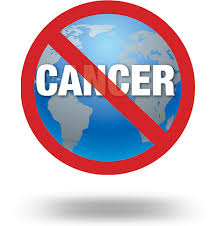Cancer can be a simple disease or a monster to the body and let us first start reviewing the basics of cancer to understand this sentence.
The body is made up of trillions of living cells. Normal body cells grow, divide to make new cells, and die in an orderly fashion. During the early years of a person’s life, normal cells divide faster to allow the person to grow.
After the person becomes an adult, most cells divide only to replace worn-out or dying cells or to repair injuries.
The pathophysiological responses of a patient with cancer are frequently determined by the size and extent of the tumor and by the presence or absence of metastases.
Cancer starts when cells in a part of the body start to grow out of control. Cancer cell growth is different from normal cell growth. Instead of dying, cancer cells continue to grow and form new, abnormal cells. Cancer cells can also invade (grow into) other tissues, something that normal cells cannot do. Growing out of control and invading other tissues are what makes a cell a cancer cell. Cells become cancer cells because of DNA (deoxyribonucleic acid) damage.
DNA is in every cell and it directs all its actions. In a normal cell, when DNA is damaged the cell either repairs the damage or the cell dies. In cancer cells, the damaged DNA is not repaired, but the cell doesn’t die like it should. Instead, the cell goes on making new cells that the body doesn’t need. These new cells all have the same damaged DNA as the first abnormal cell does=cancer cells.
The normal cells of a human body=Our red blood cells (our iron and cells that provide nutrition to our tissues by feeding oxygen to all our tissues), our white blood cells (fight infection off our body-part of immunity system), and our platelets (controls our clotting of the blood) all are taken over by the cancer cells especially if the cancer is primarily in the bone or metastasized to the bone since this organ in the human body produces all our blood cells in the bone marrow and the cancer in that causes the bone marrow to make cancer cells which is hard to cure especially if your cancer in the bone is at grade 3 or 4. If a patient’s cancer is grade 1 or 2 its much easier to treat to possible completely cure.
Again cancer can be a simple disease or a monster.
People can inherit abnormal DNA (it’s passed on from their parents), but most often the DNA damage is caused by mistakes that happen while the normal cell is reproducing or by something in the environment. Sometimes the cause of the DNA damage may be something obvious like cigarette smoking or sun exposure. But it’s rare to know exactly what caused any one person’s cancer. In most cases, the cancer cells form a tumor.
Some cancers, like leukemia, rarely form tumors. Instead, these cancer cells involve the blood and blood-forming organs and circulate through other tissues where they grow. Neoplasms or “new growths” are relatively autonomous (independent). This means that the growth and its behavior are more or less independent of the host (the normal body functions).
Neoplasms have been defined as benign or malignant; cancer is a common synonym used to refer to a malignant neoplasm. The difference between a benign and malignant neoplasm depends on its behavior in the host. Now if the neoplasm stays localized, enlarges slowly, is homogeneous in appearance, and can be resected or removed, then it is benign.
On the other hand, if the neoplasm spreads or metastasizes to other areas of the body, infiltrates and causes the destruction of normal tissue, left untreated, will kill the host, then the neoplasm is considered malignant (it takes over in the body).
If a large tumor is occupying the oral cavity, then the patients will have problems with ingestion that might lead to an altered immune-responsiveness.
If the tumor is in the large colon, then obstruction of the lumen, changes in bowel habits, and GI bleeding can occur.
In addition, if tumors are large they often outgrow the blood supply, which leads to necrosis and bleeding.
However, all the above changes are relatively late signs; the tumor would be quite large for a patient to exhibit these effects. Most small tumors are painless and symptomless.
In one sense this is unfortunate. If small tumors were painful, perhaps more patients would seek earlier treatment and tumors could be treated more successful being diagnosed before they are large.


